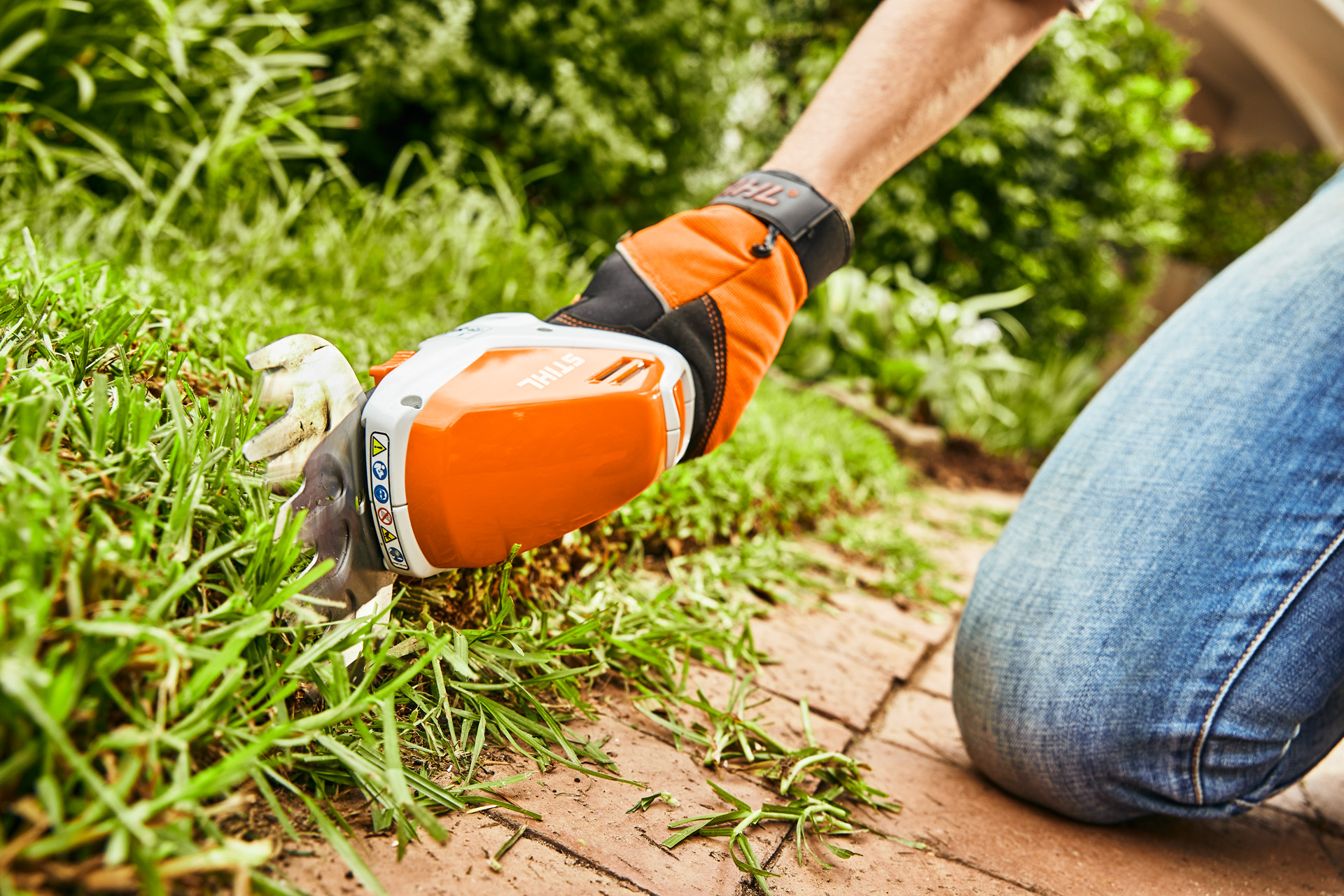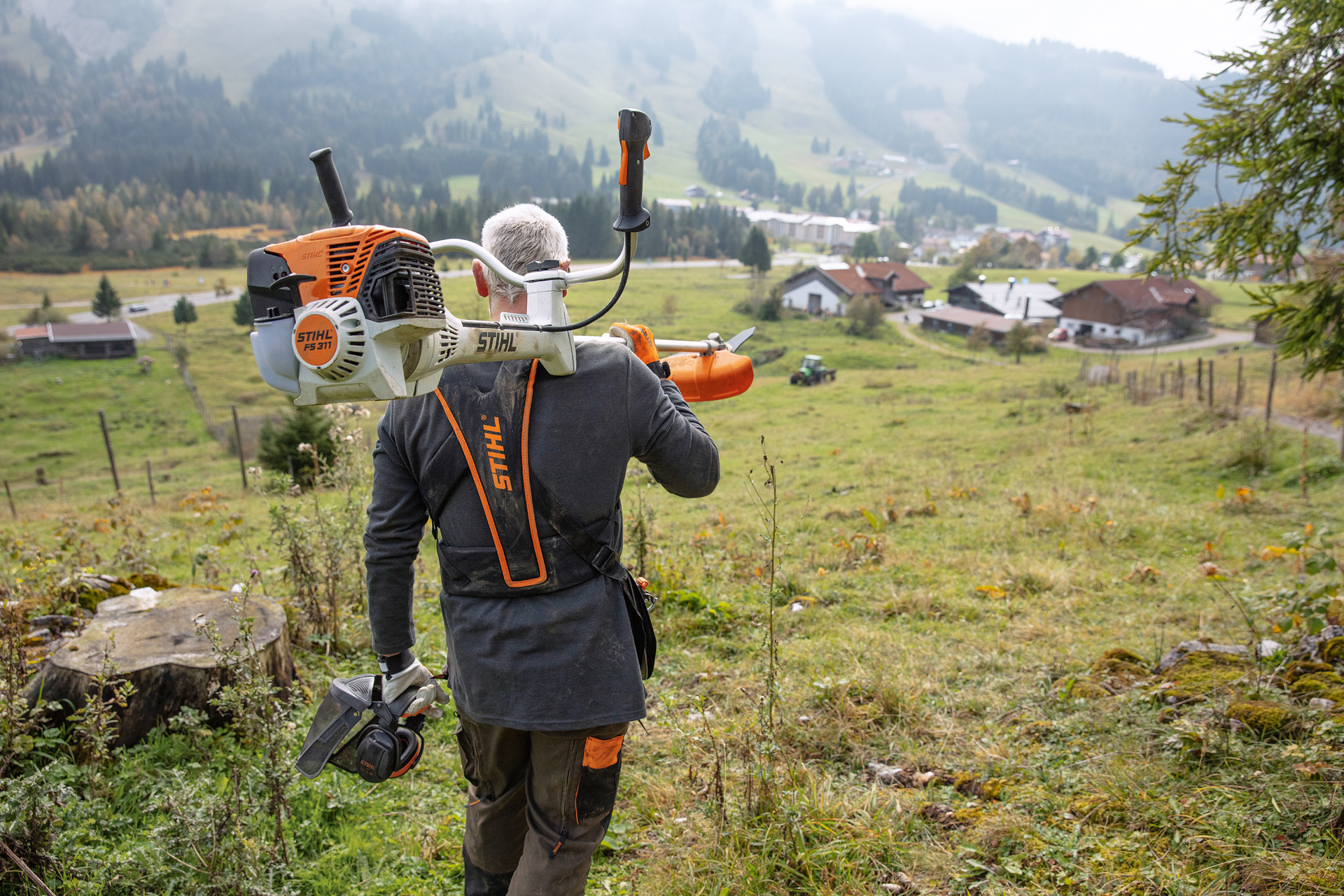All about lawn-edge trimming
Trimming lawn edges is a job worth doing to finish your lawn perfectly, but your trusty mower may not be the best tool for the job. Get equipped with the right tools for the neatest lawn edges.
02.09.2024

Mowing + trimming = perfect results
As a proud gardener, we're sure you have a diligent lawn mowing routine and always want your garden to look its best. But if you have flower borders or raised beds, you’ll know that the mower’s great results rarely extend to the very edge of your lawn. To achieve the perfect lawn edge, you just need the right tool and a little guidance.
Trim first
Here’s a simple and practical tip: always do your lawn-edge trimming before you mow the lawn. This means that the cuttings from trimming will be collected easily by your lawn mower.

Living on the edge: lawn-edge trimming tools
Identifying the right tool depends on how much trimming your garden needs and whether you want to trim the lawn edge manually or with some powered assistance. A power tool will help you tackle large plots quickly and conveniently. For smaller lawns, a lightweight, easy-to-handle grass trimmer is an ideal choice. For larger plots, we recommend a more powerful brushcutter or similar tool. We have petrol, electric and battery-powered brushcutters and grass trimmers available.
How often do I need to trim my lawn edges?
We recommend edge-trimming every time you mow your lawn. Start by trimming all around the grass edge. Doing it all in one go will give you even results. If your lawn is growing fast in spring, you can mow up to twice a week; when the weather gets dry and warmer, don’t cut the grass more than once a week. That’s a guideline, but remember that every lawn is different. A lawn grown from an ornamental grass seed mix is much more demanding than a simple recreational lawn and will need more frequent mowing and trimming.
Lawn-edge trimming techniques
If you’re using cordless garden shears for trimming your grass edging, the technique is quite intuitive: just move the tool smoothly at the level you are trimming to. We recommend you do all the trimming of your lawn edge in one go for even results. If you are using a grass trimmer or brushcutter, there are a few extra points to consider.

Trimming lawn edges with a brushcutter or grass trimmer
If you need to trim the edge of a large lawn or very long grass, we recommend using a brushcutter or grass trimmer. The right technique and balance are important to make the process effortless. Adjust the tool to the right height for your body, and hold it as described in your operating instructions. When trimming at the edge of the lawn, hold the grass trimmer at the right height over the ground and make smooth sweeping motions with it. Don't make the motions too wide as you are more likely to dip the head in the middle of the swing which creates a "bowl" effect in the grass. Also, don’t let the mowing head touch the ground, as this will cause it to wear quickly.
STIHL professional tip: If you have a trimming tool with a mowing line that you haven’t used for a while, we recommend you soak the entire spool in water for a day or more before you start trimming with it. Soaking makes the line flexible and less brittle, so it lasts longer and performs better.
To achieve good results in the long term, read our tips on maintaining and properly storing your grass trimmer.

Lawn-edge trimming: the right posture
Make sure you adjust your brushcutter or grass trimmer to suit your height. You should stand up straight while trimming with your tool to prevent back pain. The cutting tool should be just touching the ground when you stand upright. Always hold the brushcutter or grass trimmer with both hands when cutting your lawn edge to be in the best position when using the tool.
Safety considerations when trimming your lawn edge
Make sure that people stay at least 15 m away when you’re trimming your lawn with a power tool. Grass trimmers can kick up small stones, sticks or other debris on the ground, so when using them you should always wear safety glasses with appropriate face protection and suitable work clothes. For petrol-powered tools, you will also need ear protection. Your operating instructions will include more information on personal protective equipment.
Readjusting the mowing line on brushcutters and grass trimmers
If you have a brushcutter or grass trimmer with a STIHL AutoCut mowing head, it’s easy to extend the mowing line even while you’re trimming the edge of your lawn: when the tool is up to speed, just tap the rotating mowing head on the ground to release the line-holding mechanism, and about 30mm of mowing line with be automatically fed out of the mowing head.
If the mowing line is initially too long after adjustment, the mechanism may briefly become noisy because of the excess mowing line hitting the guard. There’s no need for concern if this happens, as the blade integrated into the guard will cut the line to the right length after two or three rotations.
You should regularly replace your grass trimmer wire and heads.
How to Extend The Line on A STIHL AutoCut Mowing Head
STIHL AutoCut line mowing heads are really simple to use and allow you to feed out more mowing line when required. When the tool is up to speed, simply tap the rotating mowing head on the ground and about 30 mm of fresh nylon line will be fed out of the mowing head.
The line limiting blade in the deflector automatically cuts the mowing lines to the correct length for you. You may find that the automatic feed will not take place if there is less than 25mm of mowing line showing. If the mowing line does not automatically feed out, turn off STIHL the tool and if it’s a battery model, remove the STIHL battery.
Press the spool on the mowing head and hold it while you pull out the mowing lines If the mowing lines cannot be pulled out to the required length, replace the spool or the mowing lines.
You may find that the spool is empty. To get the best out of your cordless or petrol grass trimmer, make sure you leave the spool in water for 24 hours before first use to make it more supple and last longer. It’s best practice to avoid walls and fixed objects when mowing too.
Summary: lawn-edge trimming
- Trim all around your lawn edge before you start mowing.
- Include trimming as part of your routine every time you mow the lawn.
- Use a brushcutter or grass trimmer for large areas and long grass or cordless garden shears for details and smaller spaces.
- Maintain a safety distance of 15m when trimming the edge of your lawn with a brushcutter or grass trimmer.



